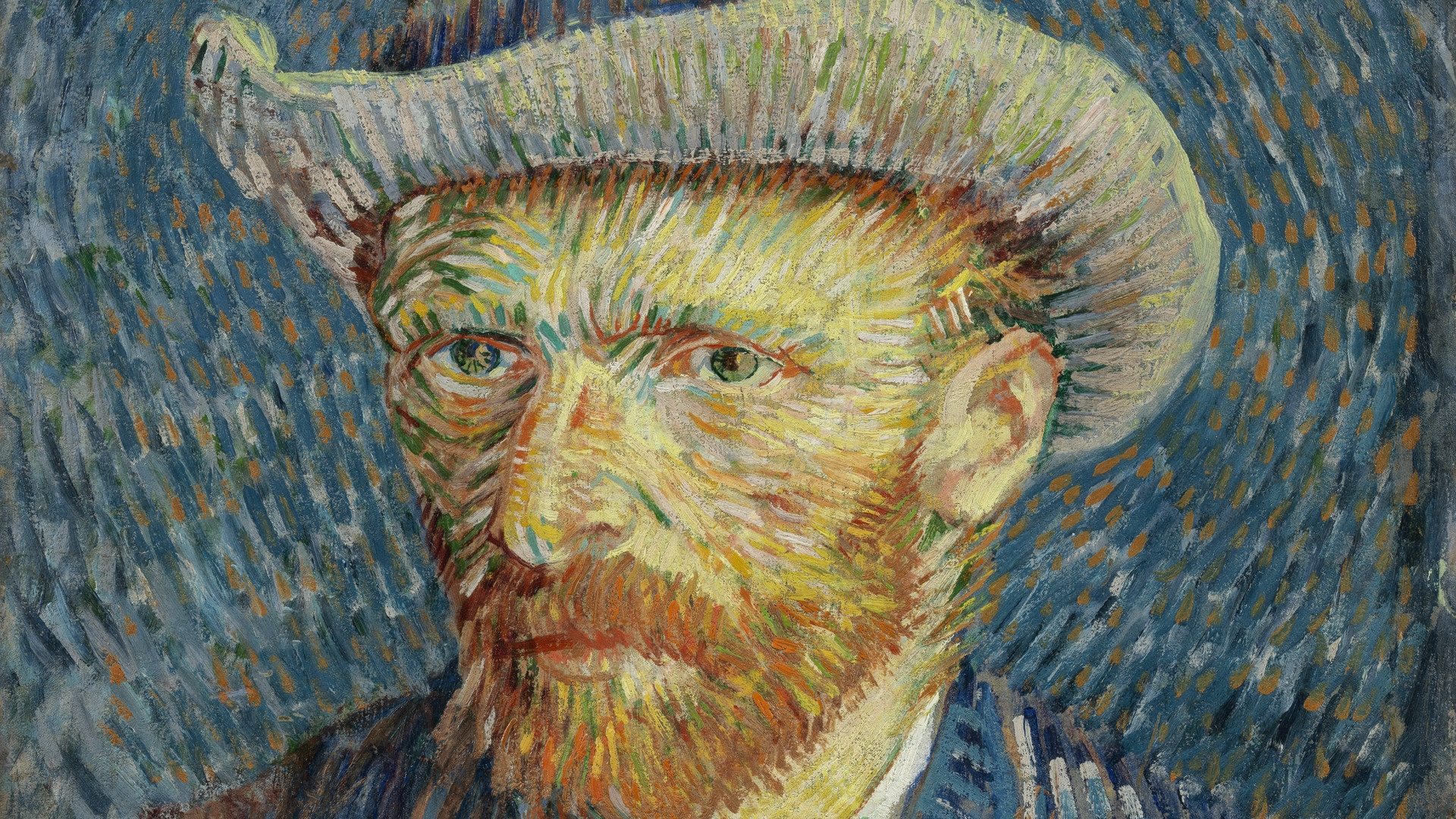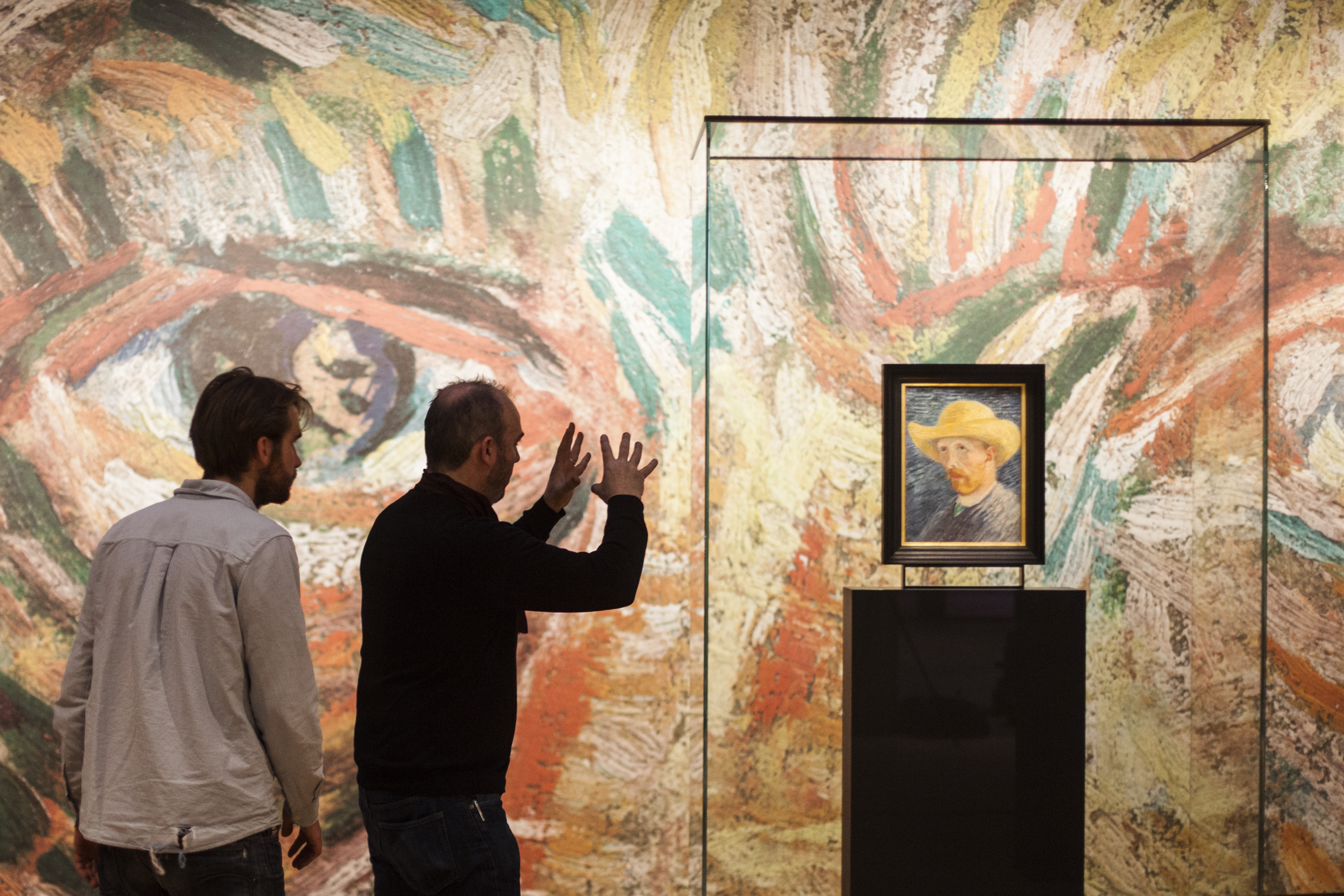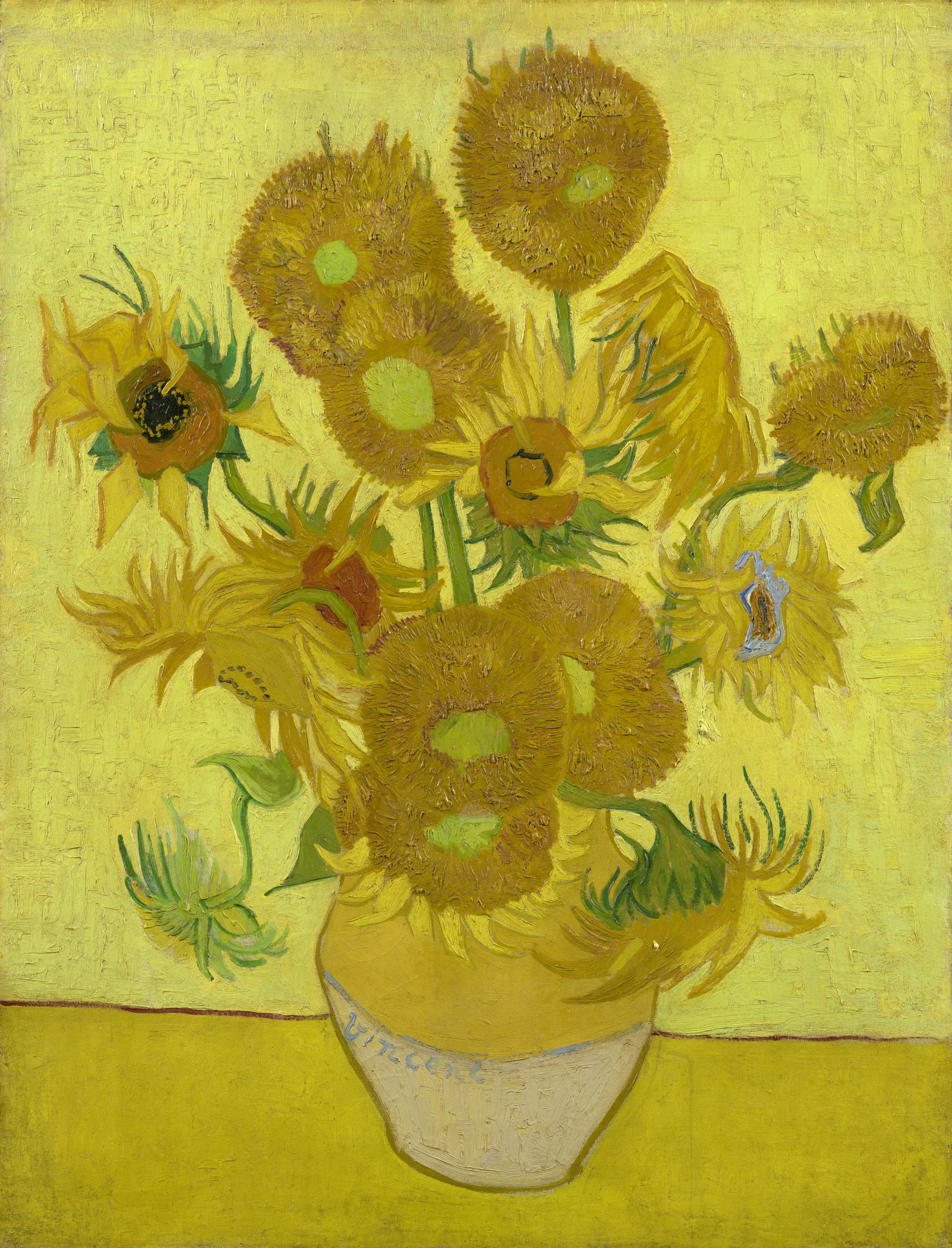David Bickerstaff, Phil Grabsky, GB, 2015o
Dieser Dokumentarfilm nimmt die Neuausrichtung des van-Gogh-Museums von Amsterdam zum Anlass, um auch das klischeebefrachtete Leben und Werk des Malers einem frischen Blick zu unterziehen. Anhand legendärer, doch auch weniger bekannter Bilder, Auszügen aus Briefen und Einordnungen durch Kenner:innen zeichnet er die fulminante Entwicklung nach, mit der van Gogh in den 1880er Jahren vom Nachvollzieher zum legendären Fortdenker des Impressionismus wurde, während er seinen enthusiastischen Weg selbst zunehmend als Scheitern erlebte.
Les tournesols, les champs de blé agités par le vent, les ciels, l'oreille tranchée, la clinique psychiatrique, la balle dans la poitrine: comme pour aucun autre grand nom de l'histoire de l'art, les clichés obstruent la vision de la vie et de l'œuvre du Néerlandais Vincent van Gogh (1853-1890). D'où la pertinence du titre de ce documentaire, qui nous permet de redécouvrir la création et le destin tragique de van Gogh. Contrairement à beaucoup de ses contemporains, ce fils de pasteur, qui avait un temps envisagé de devenir prédicateur et qui fut profondément marqué par la misère de la classe ouvrière londonienne et des mineurs du nord de la France, n'est pas né avec un pinceau dans la main. Bien que formé comme marchand d'art, tout comme son frère adoré Theo, il n'était pas heureux dans cette profession. Ce n'est qu'à 27 ans qu'il décida de devenir artiste, copiant des peintres populaires, essayant de se faire illustrateur de presse, et se heurtant (tout au long de sa vie) aux difficultés du dessin en perspective... Avec un habile arrangement d'impressions contemporaines et une série brillante de réflexions sur les œuvres par des expert·es sans prétention, le réalisateur David Bickerstaff et son co-auteur et producteur Phil Grabsky retracent les étapes de la vie, l'incroyable productivité et l'évolution artistique de van Gogh jusqu'aux audaces post-impressionnistes, pour lesquelles le peintre n'eut que dix petites années. Ce regard sensible de l'extérieur est enrichi par des extraits des lettres de Vincent, notamment celles adressées à Theo, qui révèlent Vincent non seulement comme un excellent écrivain, mais aussi comme un implacable analyste de soi, profondément protestant. Le premier mourut dans les bras du second, qui légua au monde l'œuvre soigneusement préservée, mais à peine vendue, de son frère, avant de le rejoindre dans la tombe voisine quelques mois plus tard. L'histoire est bien connue, mais elle est résumée ici avec une telle concision que l'on en est à nouveau profondément ému. Comme annoncé: «A New Way of Seeing».
Die Sonnenblumen, die wild bewegten Kornfelder und Himmel, das abgeschnittene Ohr, die psychiatrische Klinik, der Schuss in die Brust: Wie bei kaum einem anderen Superstar der Kunstgeschichte verstellen endlos reproduzierte Klischees den Blick auf das Leben und Schaffen des Holländers Vincent van Gogh (1853–1890). Umso treffender der Titel dieses Porträtfilms, der uns van Goghs Leistung und Tragik neu vor Augen führt. Anders als vielen seiner Zeitgenossen wurde dem Pfarrersohn, der eine Weile selbst Prediger werden wollte und vom Elend der Londoner Arbeiterschaft und nordfranzösischer Bergleute umgetrieben wurde, die Kunst nicht in die Wiege gelegt. Wie sein geliebter Bruder Theo zwar ausgebildet als Kunsthändler, doch mit diesem Beruf nicht glücklich, beschloss er erst mit 27, selbst Künstler zu werden, kopierte Bauernmaler, versuchte sich Zeitungsillustrator und tat sich (lebenslang) schwer mit der Perspektive ... Mit gekonnt arrangierten Gegenwartsimpressionen und einer schlagenden Reihe kluger Bildbetrachtungen durch Expert:innen ohne Dünkel vollziehen der Regisseur David Bickerstaff und sein Co-Autor und Produzent Phil Grabsky die Lebensstationen, die unerhörte Produktivität und künstlerische Entwicklung bis zum kühnen Postimpressionisten nach, für die van Gogh nur gute zehn Jahre blieben. Ergänzt wird der einfühlsame Blich von aussen durch Auszüge aus Vincents täglichen Briefwechseln, vor allem mit Theo, die Vincent auch als exzellenten Autor und unerbittlichen protestantischen Selbstanalytiker ausweisen. Der eine starb in den Armen des andern, dieser vermachte der Welt das sorgsam gehegte, aber kaum verkaufte Werk des Bruders, als er ihm wenige Monate später ins benachbarte Grab folgte. Man kennt die Geschichte, doch hier wird sie so sec auf den Punkt gebracht, dass man erneut erschüttert ist. Eben: A New Way of Seeing.
The sunflowers, the wildly moving cornfields and skies, the cut-off ear, the psychiatric hospital, the shot in the chest: more than almost any other superstar of art history, the life and work of the Dutch painter Vincent van Gogh (1853–1890) are obscured by endlessly reproduced clichés. The title of this biographical film is all the more apt, as it presents van Gogh's achievements and tragedy in a new light. Unlike many of his contemporaries, the son of a pastor, who himself wanted to become a preacher for a while and was moved by the misery of London's working class and northern French miners, was not born into art. Like his beloved brother Theo, he was trained as an art dealer but was not happy in this profession. He only decided to become an artist himself at the age of 27, copying folk artists, trying his hand at newspaper illustration and struggling (lifelong) with perspective... With skillfully arranged contemporary impressions and a compelling series of clever image observations by unpretentious experts, director David Bickerstaff and his co-author and producer Phil Grabsky trace the stages of Vincent's life, his tremendous productivity and artistic development up to the bold post-impressionism, which Vincent only had time for a good ten years. The empathetic view from the outside is complemented by excerpts from Vincent's daily correspondence, especially with Theo, which also reveal Vincent to be an excellent writer and relentless Protestant self-analyst. One died in the arms of the other, who bequeathed his brother's carefully nurtured but rarely sold work to the world when he followed him to the neighboring grave a few months later. We know the story, but here it is so succinctly brought to the point that it is shocking all over again. Exactly: A New Way of Seeing.
Galerieo





